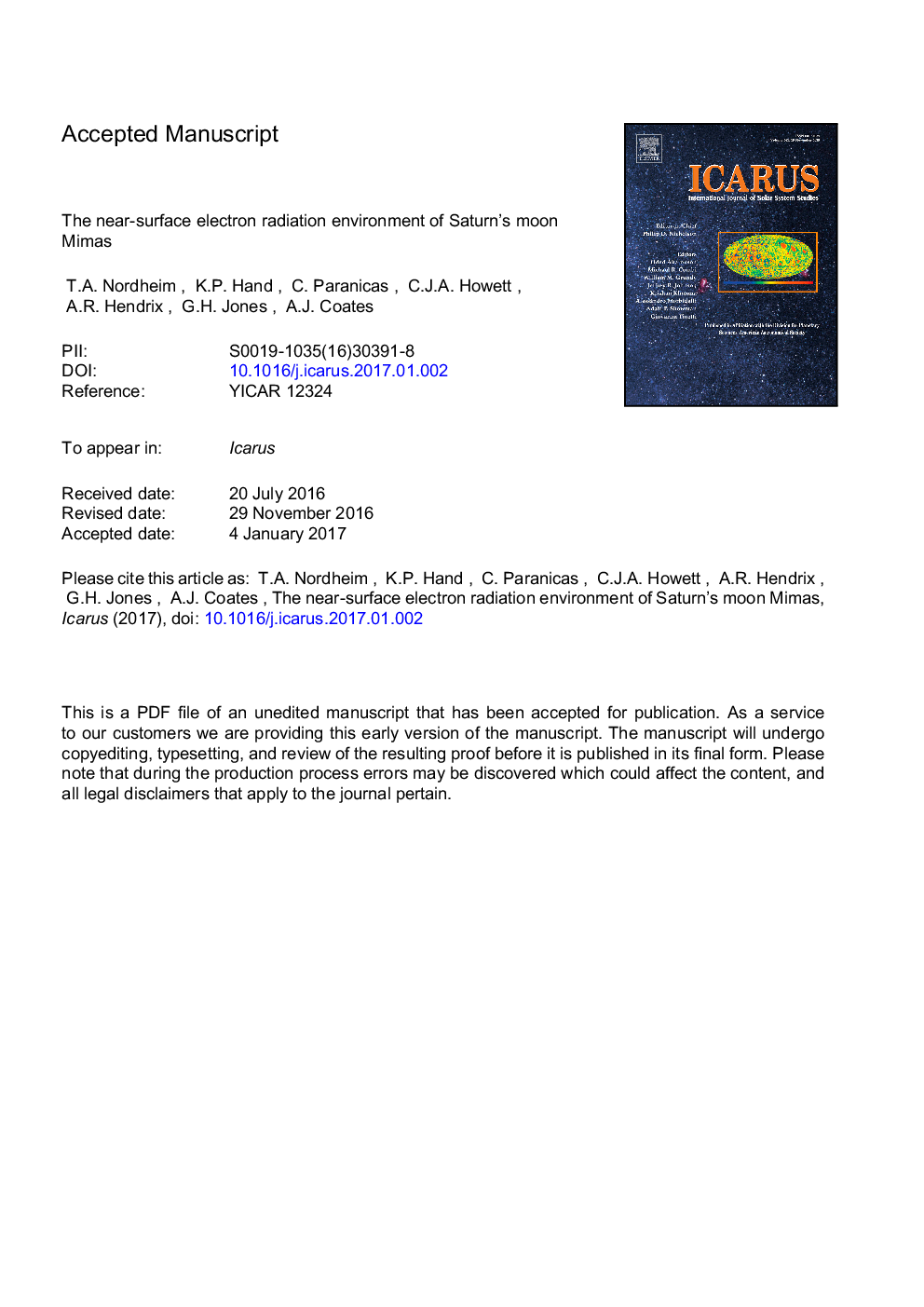| کد مقاله | کد نشریه | سال انتشار | مقاله انگلیسی | نسخه تمام متن |
|---|---|---|---|---|
| 5487108 | 1523505 | 2017 | 34 صفحه PDF | دانلود رایگان |
عنوان انگلیسی مقاله ISI
The near-surface electron radiation environment of Saturn's moon Mimas
ترجمه فارسی عنوان
محیط تابش الکترون نزدیک به سطح ماه زحل است
دانلود مقاله + سفارش ترجمه
دانلود مقاله ISI انگلیسی
رایگان برای ایرانیان
موضوعات مرتبط
مهندسی و علوم پایه
علوم زمین و سیارات
علوم فضا و نجوم
چکیده انگلیسی
Saturn's inner mid-size moons are exposed to a number of external weathering processes, including charged particle bombardment and UV photolysis, as well as deposition of E-ring grains and interplanetary dust. While optical remote sensing observations by several instruments onboard the Cassini spacecraft have revealed a number of weathering patterns across the surfaces of these moons, it is not entirely clear which external process is responsible for which observed weathering pattern. Here we focus on Saturn's moon Mimas and model the effect of energetic electron bombardment across its surface. By using a combination of a guiding center, bounce-averaged charged particle tracing approach and a particle physics code, we investigate how the radiation dose due to energetic electrons is deposited with depth at different locations. We predict a lens-shaped electron energy deposition pattern that extends down to â¼cm depths at low latitudes centered around the apex of the leading hemisphere (90° W). These results are consistent with previous remote sensing observations of a lens-shaped color anomaly observed by the Imaging Science Subsystem (ISS) instrument as well as a thermal inertia anomaly observed by the Visual and Infrared Mapping Spectrometer (VIMS) and the Composite Infrared Spectrometer (CIRS). Our results confirm that these features are produced by MeV electrons that have a penetration depth into the surface comparable to the effective sampling depths of these instruments. On the trailing hemisphere we predict a similar lens-shaped electron energy deposition pattern, whose effects have to date not been observed by the Cassini remote sensing instruments. We suggest that no corresponding lens-shaped weathering pattern has been observed on the trailing hemisphere because of the comparatively short range of lower energy (<1 MeV) electrons into surface ice, as well as competing effects from cold plasma, neutral, and dust bombardment.
ناشر
Database: Elsevier - ScienceDirect (ساینس دایرکت)
Journal: Icarus - Volume 286, April 2017, Pages 56-68
Journal: Icarus - Volume 286, April 2017, Pages 56-68
نویسندگان
T.A. Nordheim, K.P. Hand, C. Paranicas, C.J.A. Howett, A.R. Hendrix, G.H. Jones, A.J. Coates,
